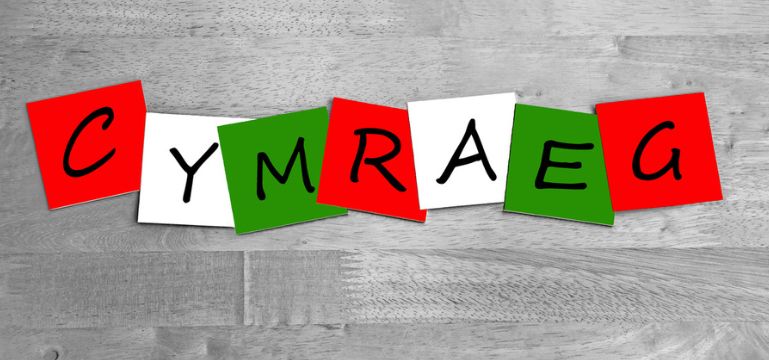Promoting enthusiasm for using Welsh language

Quick links:
Information about the school
-
Undy Primary School is situated in the village of Undy which is south of the M4 between Newport and Caldicot. We are part of the Caldicot Cluster.
-
There are currently 380 FTE on role within the school.
-
It is a two form entry school, with a morning and afternoon nursery.
-
Six per cent of the pupils are eligible for free school meals.
-
Sixteen per cent of pupils have additional learning needs.
Context and background to the effective or innovative practice
-
The school was identified as a Lead Network School for Welsh Second Language in 2019.
-
The school was Awarded the Cymraeg Campus Arian Award in May 2022.
-
The Welsh Co-ordinator took on role in 2020 following a 12 week sabbatical in 2018.
-
The headteacher has been in post since January 2020.
-
The last inspection was in May 2023.
Description of nature of strategy or activity
Although Welsh was deemed as good, in January 2020 the SMT identified the need to improve Welsh oracy across the school and promote the use of Welsh outside of the classroom. As a result, a range of strategies have been developed to support the consistent promotion of Welsh in everyday activities. Younger pupils are exposed to Welsh daily through the use of Fflic and Fflac with pupils leading their learning using the Helpwr Heddiw model. Pupils ask and answer questions with each other. Staff are integral in introducing incidental Welsh into routines and everyday activities, for example when eating snack, morning and home time routines and at playtimes. Parents are also encouraged to develop their Welsh oracy skills by attending Dewch i Drio events. These events are run by Criw Cymraeg and aim to introduce basic language patterns to parents so they can support their children’s use of Welsh at home.
As pupils progress through the school, they take on further responsibility for using Welsh language around the school. Criw Cymraeg play with them at break and encourage pupils to use Welsh language outside of the classroom. All staff use incidental Welsh and plan for opportunities to use Welsh across the curriculum. ‘Star of the week’ pupils take a Ddraig Coch (red dragon) home and are encouraged to write about their weekends using familiar Welsh language patterns in a diary which takes the language beyond the school environment.
The oldest pupils have the opportunity to become members of Criw Cymreag. This group is led by a very enthusiastic HLTA. Criw Cymraeg aim to make speaking Welsh ‘Cwl’ (cool). They use a wide range of approaches such as sharing the ‘phrase of the moment’ on social media, challenging staff to remember to use Welsh, presenting assemblies to the whole school, and sharing good practice with other schools. Their example has influenced many pupils who now encourage both peers and adults to speak Welsh. This has had a significantly positive impact on Welsh language skills across the school. The school also has Welsh Ambassadors who meet and greet visitors. The headteacher uses Welsh in assemblies, when communicating with parents and endeavours to find opportunities to reinforce language patterns introduced via the phrase of the moment.
An online language app has been instrumental in promoting high levels of engagement when developing pupils’ oracy, reading and writing skills. There are weekly certificates for pupils and staff who engage well. Older pupils have the opportunity to use the app in school but many pupils and staff also choose to use it at home. Through friendly competition pupils are developing a broad vocabulary base.
Thematic use of Welsh is also a key driver in developing opportunities for pupils to use Welsh in a range of learning contexts, including forest schools and PE sessions. Staff are becoming more adept at planning for Welsh language to be delivered through their themes rather than discrete lessons. Pupils develop vocabulary using games and daily oracy sessions. For example, they have enjoyed using their Welsh language to talk about famous people, write raps and perform as TV presenters. The use of ICT has also promoted and developed the use of Welsh oracy as pupils video themselves or each other and offer valuable feedback through self and peer assessment.
When out of school, many pupils are keen to use their Welsh language skills during school visits and residential stays.
What impact has this work had on provision and learners’ standards?
Most pupils in school are able to use incidental Welsh confidently in a range of contexts. As pupils progress through the school, they develop a wide range of purposeful phrases which they use naturally to communicate to their peers and staff. Welsh is visible in all learning spaces and staff regularly use Welsh both inside and out of the classrooms. There is a true feeling of Welshness within the school and pupils are proud to speak Welsh.
How have you shared your good practice?
As a Learning Network School (LNS), the school has shared best practice with other schools through local curriculum lead meetings and the Dewch i Weld event. The Criw Cymraeg have hosted Criw Cymraeg from another school to share their work and what they have achieved. The school has also worked closely with a cluster school to share their most successful strategies.